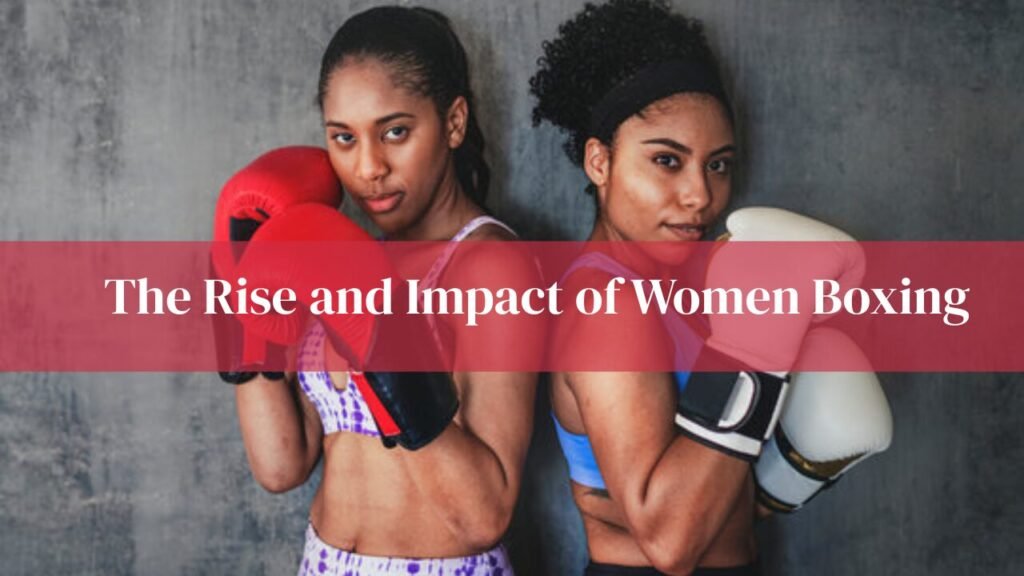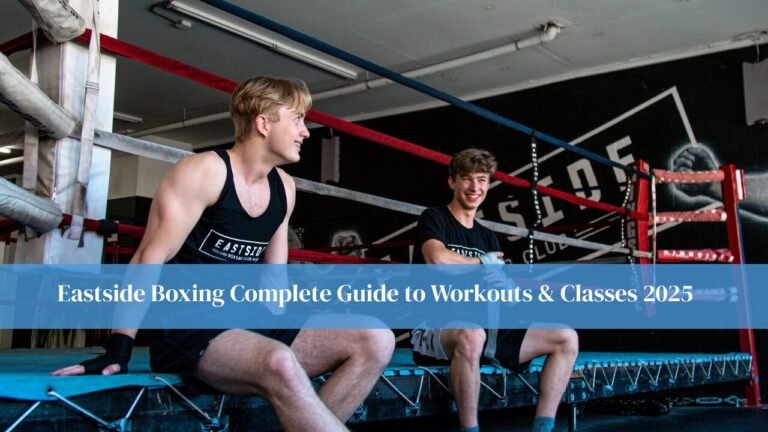The history of the rise and impact of women’s boxing stretches back centuries, though for much of that time, the sport was marginalized and dismissed. Early accounts of women stepping into the ring date back to the 18th century, when female bouts were treated more as spectacles for entertainment than as legitimate athletic contests. These early matches, while occasionally popular among curious spectators, lacked the structure, recognition, and respect afforded to their male counterparts. In an era when sport itself was largely considered a male domain, women’s participation in boxing challenged deeply entrenched social norms.
By the early 20th century, however, pioneering women began to push for recognition in the sport. Their journey was anything but easy. Many faced outright bans, restrictions on participation, and limited access to proper training or competitive opportunities. Public criticism from officials and audiences was widespread, often questioning the appropriateness of women participating in such a physically demanding and aggressive discipline. Despite these barriers, there were women who refused to step back. They trained diligently, performed courageously, and advocated for the legitimacy of women’s boxing, ensuring that the spark would remain alive for future generations to nurture and grow.
In 1904, women’s boxing made a brief appearance at the Olympic Games in the United States as a demonstration sport. While it was not added to the official Olympic program at the time, this moment was symbolic. It planted a seed for future inclusion, showing that women could perform at the highest levels of the sport. However, it also served as a reminder of the long road ahead toward equality and global recognition.
The late 20th century brought significant turning points. By the 1990s, the tide began to shift in a more promising direction. Licensing bodies, such as the British Boxing Board of Control, officially began sanctioning women’s fights. This ushered in a new era, opening doors for professional opportunities and international competitions. With legitimacy came the chance for female athletes to compete on a more equal footing, setting the stage for mainstream acceptance.
A true landmark moment arrived in 2012, when women’s boxing was officially included in the London Olympic Games. This achievement marked the sport’s full Olympic recognition, elevating it from the sidelines to the center stage of international competition. The inclusion not only validated the skill and dedication of female boxers but also inspired countless young women around the world to step into the ring with pride and purpose.
The Rise and Transformation of Women’s Boxing
Over the past two decades, women’s boxing has undergone a remarkable transformation, breaking barriers and redefining gender roles in combat sports. What was once an overlooked and often ridiculed pursuit has now become a celebrated global phenomenon. Female boxers are headlining major events, securing championship belts, and representing their nations on prestigious platforms such as the Olympics and professional world title fights.
Figures like Katie Taylor and Claressa Shields have become household names, inspiring a new generation with their discipline, determination, and unmatched skill. Their successes demonstrate that strength, agility, and tactical intelligence are not defined by gender. The rise of these athletes has contributed to increased investment from sponsors, wider media coverage, and greater participation among young women.
The impact of women’s boxing extends far beyond the ring. It has become a platform for empowerment, a way to challenge stereotypes, and a movement that encourages women to pursue their ambitions without apology. In countries where gender equality still faces significant cultural resistance, women’s boxing has served as both a symbol and a tool for change.
Pioneers Who Paved the Way
Barbara Buttrick, known as the “Mighty Atom of the Ring,” was a trailblazer during the 1950s, taking on opponents around the world at a time when women’s boxing had little formal recognition. Her determination and global appeal made her a true pioneer of the sport.
Christy Martin emerged in the 1990s as one of the first female boxers to gain mainstream attention in the United States. Her televised bouts not only brought in significant audiences but also shifted perceptions, proving that female fighters could deliver the same level of excitement as their male counterparts.
Claressa Shields represents the modern era of women’s boxing at its finest. A two-time Olympic gold medalist and multiple-weight world champion, she has become the face of contemporary women’s boxing, known for her skill, confidence, and advocacy for gender equality.
Why Women’s Boxing Matters
Women’s boxing provides a powerful platform for empowerment. It teaches discipline, builds self-confidence, and develops both physical and mental strength. The lessons learned in the ring resilience, perseverance, and strategic thinking extend into everyday life, equipping women with skills that are just as valuable outside the sport. Nicola Adams, the first female Olympic boxing champion, once said, “Boxing gave me confidence I never thought I had,” a statement that reflects the transformative power of the sport.
Equally important is the role women’s boxing plays in breaking down gender barriers. For generations, the idea of women participating in such an intense and physical sport was considered unacceptable. Today, female boxers are not only accepted but celebrated, competing in front of record-breaking crowds and appearing in high-profile media coverage.
Health benefits also play a role in the sport’s growing appeal. Boxing improves cardiovascular fitness, enhances muscle tone, increases agility, and helps with mental clarity and stress reduction. It also instills a sense of discipline and focus, qualities that are valuable for personal growth and professional success. According to England Boxing, over 40% of new boxing participants in recent years have been women a number that continues to grow through community outreach and school-based programs.
Global and Local Growth
The global expansion of women’s boxing gained significant momentum after its Olympic inclusion in 2012. Nations such as the United States, United Kingdom, Ireland, and India have invested heavily in female boxing programs, producing world-class athletes and national champions. Major promotional companies like Matchroom and Top Rank now frequently feature women’s bouts on pay-per-view events, proving that audiences are eager to support and watch these athletes compete.
In the United Kingdom, England Boxing has been instrumental in developing grassroots programs to encourage more women to participate. Campaigns such as “This Girl Can Box” offer resources, structured training programs, and competitions specifically designed for women and girls, ensuring that opportunities are accessible to all skill levels.
Overcoming Persistent Challenges
Despite its progress, women’s boxing still faces hurdles. Media coverage for female fights remains inconsistent, and pay disparities between male and female boxers continue to be a major concern. In some regions, cultural norms still discourage or outright prohibit women from boxing. Nonetheless, organizations like the International Boxing Association (IBA) and initiatives such as the Women Boxing Archive Network work tirelessly to preserve the sport’s history, promote its athletes, and advocate for fair treatment.
Success Stories That Inspire
Claressa Shields’ undefeated professional record and her advocacy for women in sports have cemented her as a global role model. Katie Taylor’s Olympic gold and dominance as an undisputed lightweight champion have elevated the sport’s profile in Ireland and across Europe. Ramla Ali, the first female Somali boxer to compete in the Olympics, has used her platform to establish a charitable boxing club for refugees and women from underrepresented communities. These athletes exemplify how success in the ring can be channeled into positive social change.
FAQs
What age can girls start boxing?
Most clubs accept girls as young as 8 years old for beginner training sessions, with competitions generally starting from age 11.
Is boxing safe for women?
Yes, when trained properly and with protective gear, boxing is no more dangerous than other contact sports. Safety is prioritized at all training levels.
Can women box professionally?
Absolutely. There are numerous female professional fighters across various weight classes with world titles on the line.
Do I need experience to join a boxing gym?
No prior experience is needed. Most clubs offer beginner sessions for all fitness levels.
Where can I watch women’s boxing events?
You can watch matches on platforms like DAZN, Sky Sports, and ESPN+. Major events often stream on YouTube or official boxing promotion websites.
Conclusion
The rise and impact of women’s boxing is not just a story about punches, gloves, and victories in the ring it is a testament to empowerment, equality, and perseverance. From humble beginnings and long-standing marginalization to Olympic recognition and global respect, the journey has been hard-fought and inspiring.
Today, women’s boxing is more accessible than ever, with opportunities for fitness enthusiasts, aspiring athletes, and professional competitors alike. Whether training at a local community gym, stepping into an amateur bout, or chasing world titles, female fighters around the world are boldly redefining what it means to be strong, skilled, and unstoppable. Their dedication and courage continue to inspire new generations, transforming not only the sport of boxing but also the cultural landscape of women’s sports worldwide.
click here to explore more.




